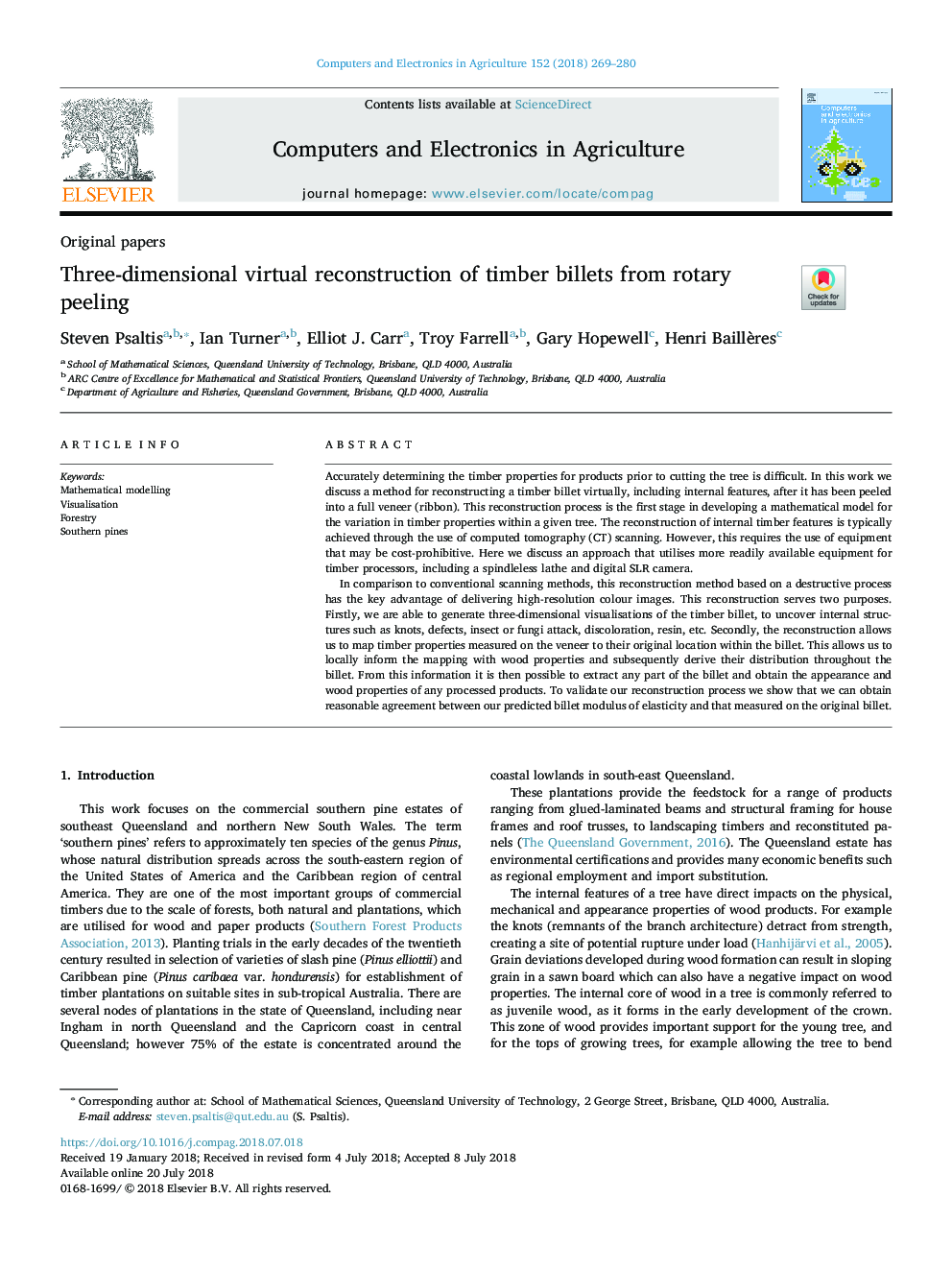| Article ID | Journal | Published Year | Pages | File Type |
|---|---|---|---|---|
| 6539273 | Computers and Electronics in Agriculture | 2018 | 12 Pages |
Abstract
In comparison to conventional scanning methods, this reconstruction method based on a destructive process has the key advantage of delivering high-resolution colour images. This reconstruction serves two purposes. Firstly, we are able to generate three-dimensional visualisations of the timber billet, to uncover internal structures such as knots, defects, insect or fungi attack, discoloration, resin, etc. Secondly, the reconstruction allows us to map timber properties measured on the veneer to their original location within the billet. This allows us to locally inform the mapping with wood properties and subsequently derive their distribution throughout the billet. From this information it is then possible to extract any part of the billet and obtain the appearance and wood properties of any processed products. To validate our reconstruction process we show that we can obtain reasonable agreement between our predicted billet modulus of elasticity and that measured on the original billet.
Related Topics
Physical Sciences and Engineering
Computer Science
Computer Science Applications
Authors
Steven Psaltis, Ian Turner, Elliot J. Carr, Troy Farrell, Gary Hopewell, Henri Baillères,
